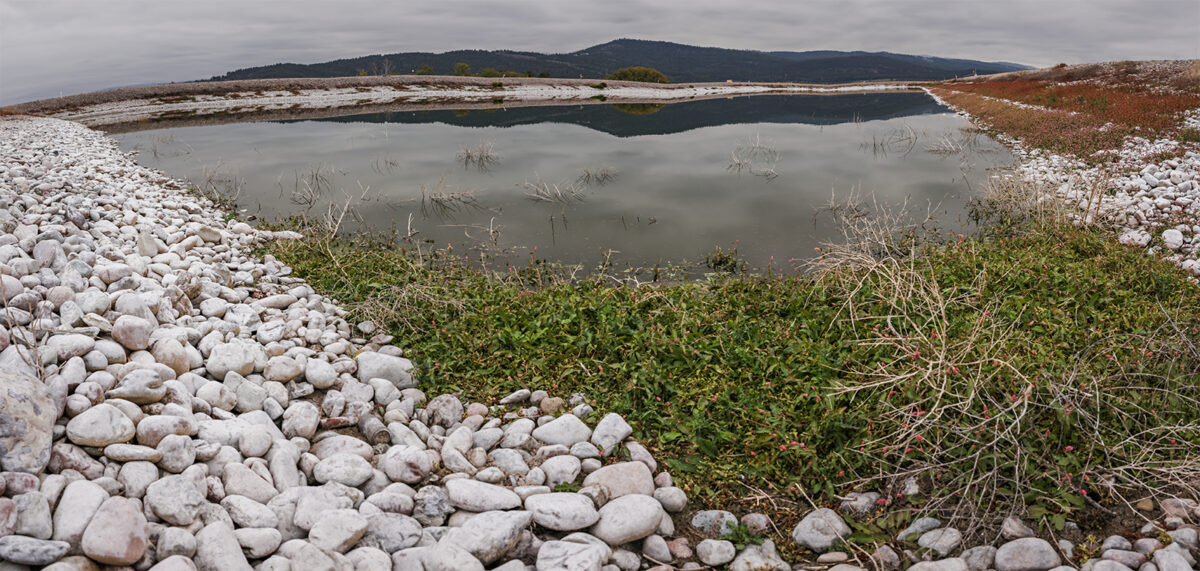Amid Ongoing Litigation, Lakeside Sewer District Plugs Away at Expansion Project
The district is waiting to hear whether a judge will approve a preliminary injunction that would pause progress on the plant
By Zoë Buhrmaster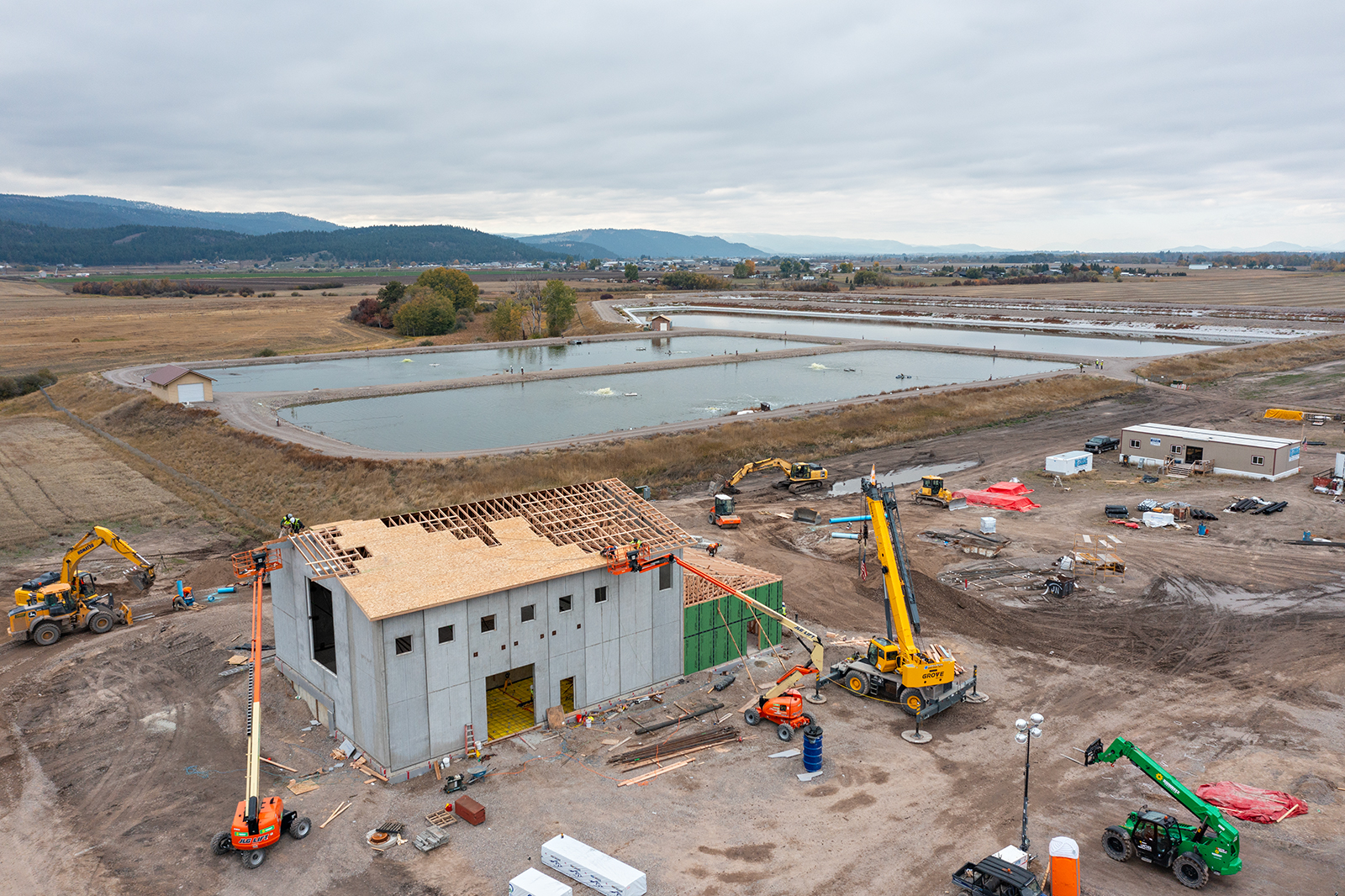
Just off the intersection of U.S. Highway 93 and Somers Stage Road, sits a gray concrete building, tall like an old chapel, with wooden scaffolding beginning to show signs of a roof. Posters with the quote, “Integrity: doing the right thing, when nobody is looking,” hang from a shipping container and general contracting firm Swank Enterprise’s job site office. The building is the bones of what is slated to become a new septage receiving facility for the Lakeside Water and Sewer District (LCWSD) and Flathead County.
Construction on the district’s new facility began in May, after the Montana Department of Environmental Quality (DEQ) issued a wastewater permit to the district. The permit greenlit the first of a two-phase plan to upgrade and expand the facility’s capacity.
According to the phase one plans, the septage receiving facility will include a potable well and an integrated screening system, along with a biofilter system to help with odor control. A lift station will pump screened septage to the new headworks, which will be mixed with regular household wastewater before entering the new treatment plant.
A few fields away, construction is also underway on the new headworks building, which will host a new screening system with grit removal and a biofilter system to help with odor control.
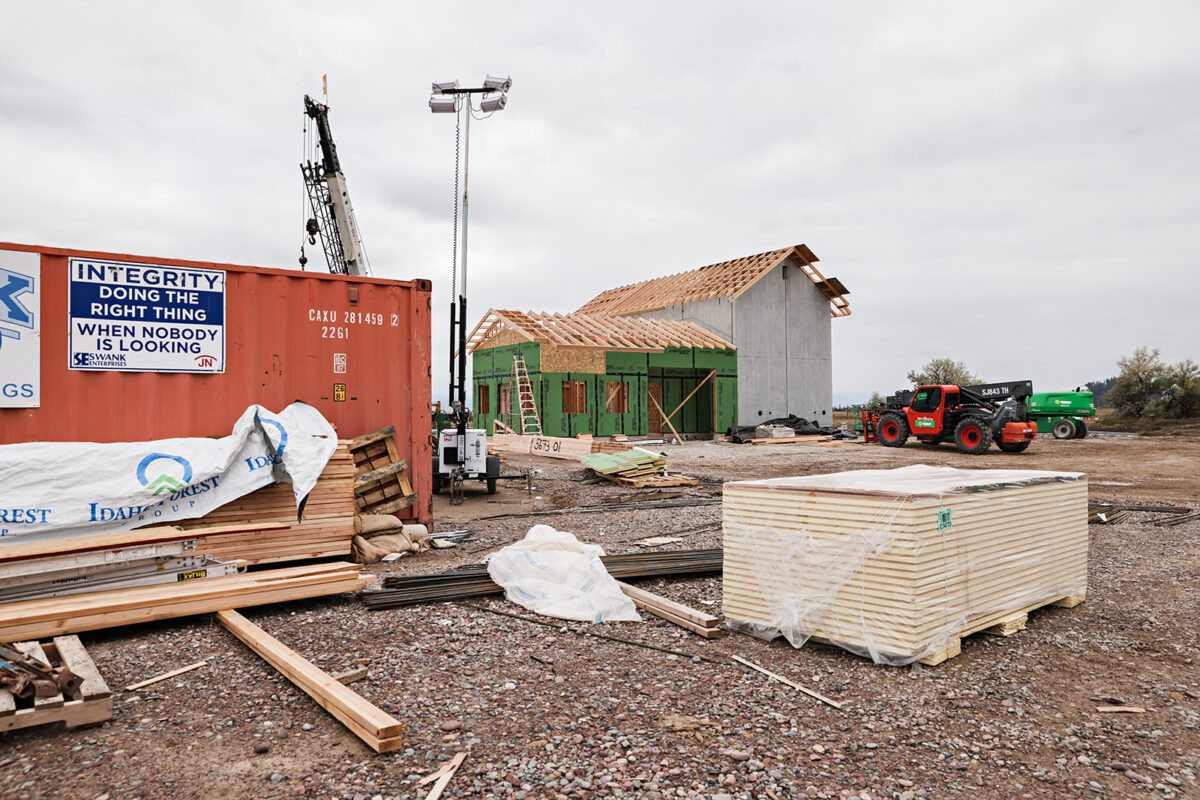
General Manager Rodney Olson walked along the gravel road that banks the existing wastewater holding ponds on Wednesday afternoon, the day after the first set of hearings on a case that could halt construction of the new plant. Local watchdog group Citizens for a Better Flathead (CBF) and the Confederated Salish and Kootenai Tribes (CKST) are challenging the Montana Department of Environmental Quality’s (DEQ) decision to approve the district’s groundwater discharge permit. The groups alleges that the permit fails to represent the full impact that the new facility and treatment method – allowing treated wastewater to seep into groundwater over time – would have on Flathead Lake and its surrounding tributaries.
In public meetings and online comments, Olson has heard opinions from community members who have suggested rerouting the facility to a new location – i.e. down to the bottom of Flathead Lake or on the other side of the nearby mountain range, pointing to Tahoe Basin where all waste is pumped out of the Lake Tahoe watershed.
For a small community like Lakeside, however, those options present more problems than solutions, Olson said, including somewhere around double the price tag of where the price estimate for the district’s expansion project currently sits. Planning with appropriate landowners and entities would add decades to a project that is needed now, Olson said.
“I mean, that’s something for Flathead County to start visiting,” Olson said. “We have a board member that’s been talking about for years, you know, taking it over the mountains in the flats out there. He said, ‘Someday.’ And it probably will.”
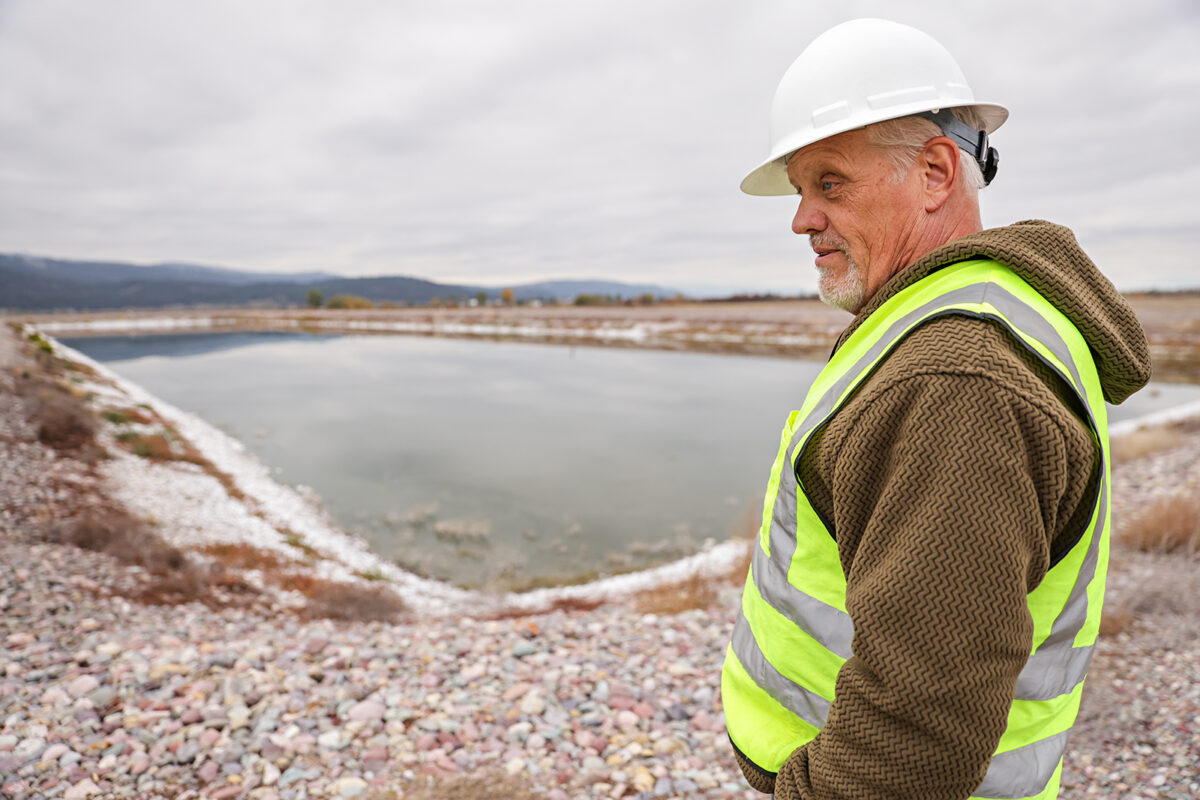
The district’s current treatment wells and winter holding ponds don’t necessarily have a life span if they are well taken care of, Olson said. To help preserve the PVC liners that blanket the bottom of the holding ponds, district employees installed riprap, a layer of round rocks on the banks surrounding the pond, to help prevent soil erosion and protect the liners from UV rays. Since the ponds were built, district officials have had contractors regrade and add gravel to the roads that run around the outer banks of the ponds for reinforcements.
Still, the district’s current treatment wells and winter holding ponds have capacity to take in effluent from about 70 more homes. With growth in the area and a need for a treatment type that can withstand a large earthquake in the Flathead Valley, the district turned to the wastewater-to-groundwater permit process.
In the current proposed treatment plans, which include building three rapid infiltration basins (RIBs) for the treated wastewater to be dispersed into, the treatment wells and holding ponds from the current facility would stay. The existing winter holding ponds only have approximately a half inch of sludge in them, Olson said, and most of the sludge is reprocessed when it goes back into the treatment calls.
“The two treatment cells will be taken offline when the new plant is built in the second phase,” Olson said. “There will be some kind of process to remove that sludge after that happens.”
If the new treatment plant were to fail, district operators would have the holding ponds to reroute wastewater in case of an emergency.
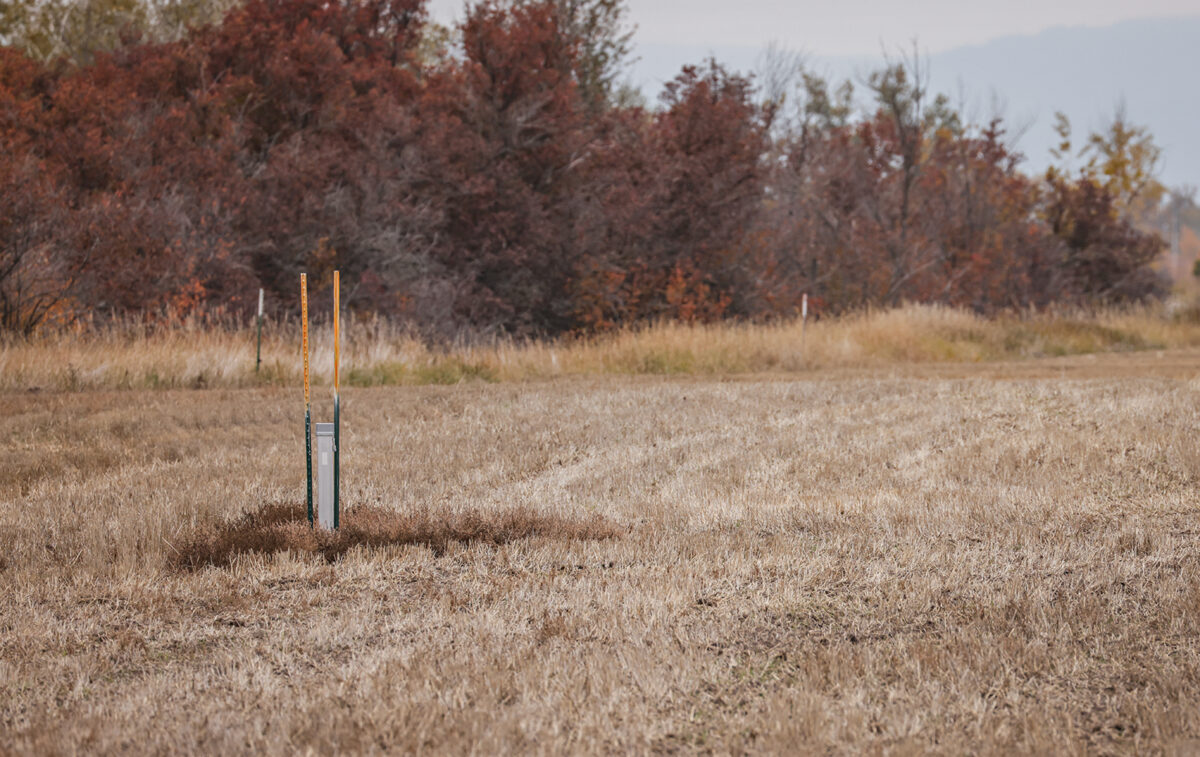
Phase two of the district’s expansion plan includes mapping out the treatment method and necessary infrastructure that the district will use to treat wastewater before it’s dispersed to the basins. At an Aug. 21 meeting, district board members voted to use sequence batch reactor (SBR) technology that uses cycles, or batches, where the treatment and settling of solids occur in the same tank. The board also voted to use aluminum sulfate, another wastewater treatment process, a “safety back that anyone would want to build into their plant,” Olson said.
“We’re confident we can do what we need to with an SBR plant,” Olson said.
Compared to the other proposed options, the batch reactor technology requires a smaller footprint, allows operators to change the flow of effluent quickly and easily, and has lower upfront and long-term operational costs for the water and sewer district.
Olson said the district is looking into potentially adding another treatment process, a small membrane bioreactor (MBR), to treat the water after it has run through the SBR plant, before it enters the basins.
“Again, it’s money,” Olson said. “But if it makes people happy, if we can pull it off … we did pick SBR, but we’re not done looking at potentially what we could do along with that.”
On Oct. 10, DEQ officials sent a letter to the district with a list of questions about phase two of the project. In the letter, Steve Lipetzky, a senior DEQ engineer, asked clarifying questions on some of the processes including questions about the proposed SBR system.
Lipetzky also noted that the Water Pollution Control State Revolving Fund (WPCSRF) will have to complete an Environmental Assessment (EA) for the project’s second phase, which will include a 30-day public comment period.
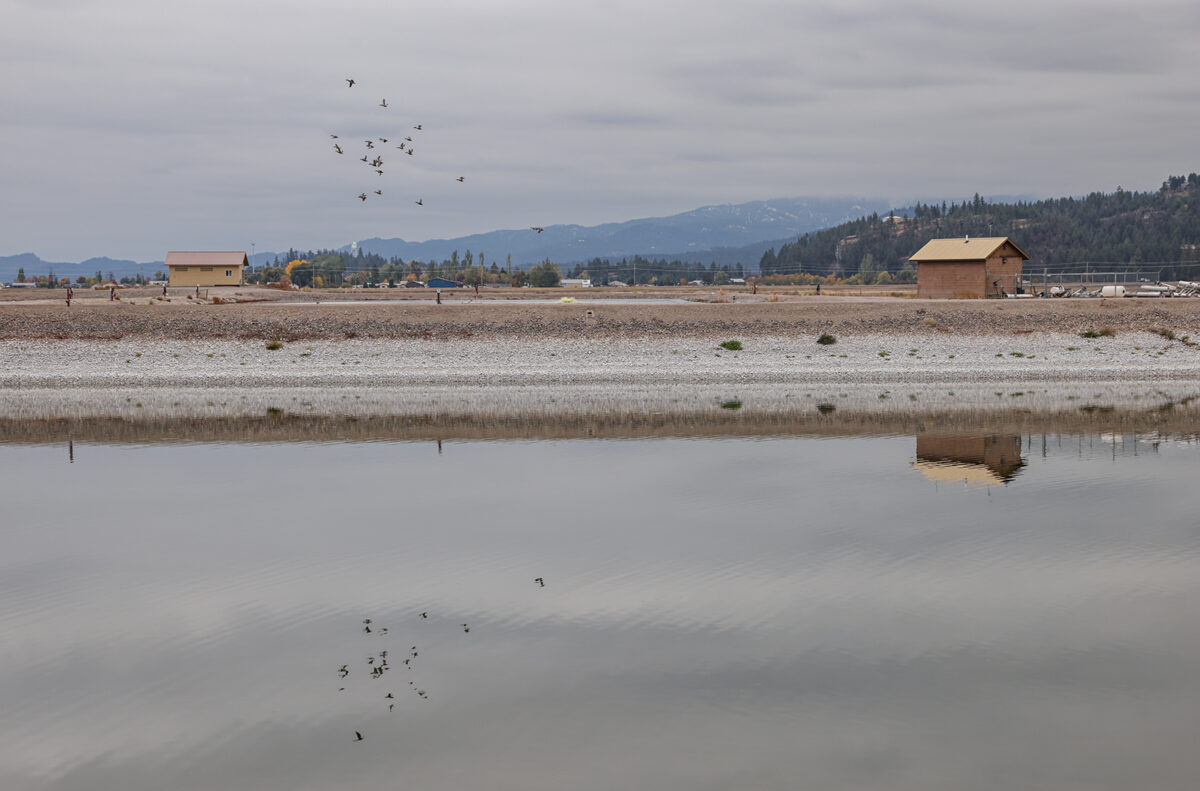
In a separate lawsuit, CBF and Lakeside district ratepayer Bruce Young are suing the district for allegedly violating public participation laws. They claim that the board did not provide “reasonable opportunity” for ratepayers to participate during the approval process surrounding the expansion project and a proposed luxury resort that the district has agreed to service.
Denied a preliminary injunction by Flathead County District Court Judge Paul Sullivan, the group petitioned the Montana Supreme Court for a writ of supervisory control on the ruling. On Oct. 3, the Supreme Court gave the water and sewer district and the district court 30 days to reply to the petition.
Meanwhile, the district is currently waiting to hear back from a judge to rule on Citizens’ request for a preliminary injunction to temporarily block the expansion project until the lawsuit against DEQ is resolved.
In response to the motion for a preliminary injunction, DEQ attorney Aaron Pettis pushed back on the claim of urgency, writing that the agency’s permit does not currently allow the district to discharge wastewater into the groundwater. Phase two, which includes the treatment facility, has yet to go through DEQ’s approval process.
